Following is a step by step description of my neck resetting
process. First thing to do is evaluate the guitar.
A neck reset is called for when you have the combination of a) a
too high action, b) not enough saddle to adjust, or a) a good action, but b) no
saddle left to adjust. The first thing to check is neck relief, to make
sure it's in specs. Too much relief (anything over .015") should be
adjusted out (to .005" or so). Doing so will change the action and change
the saddle height.
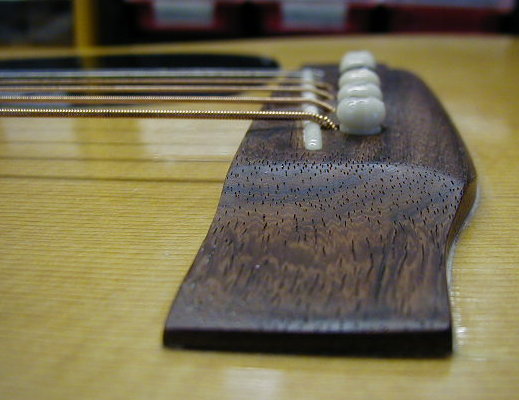 |
Here's a saddle that's way too low. The strings
aren't breaking over the saddle and the thick part of the winding is
sitting on the saddle. Doesn't really matter what the action is on
this guitar- it needs a neck reset. |
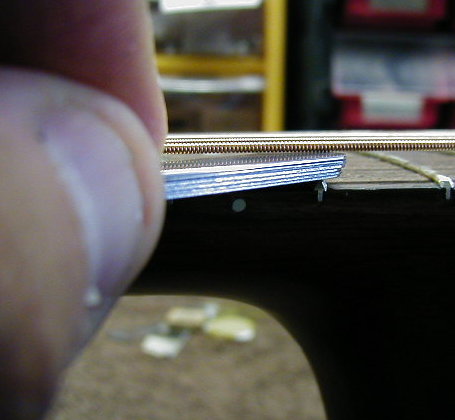 |
I need the specs, though, so I'm measuring the action
here using my trusty feeler gauges. All I really need is the low
E. I'll probably check the others just for reference, but if the
low E is right, the other strings will be right, too. |
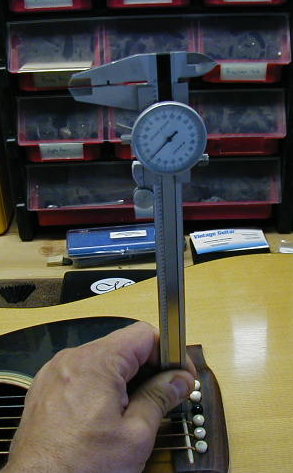 |
Here I'm measuring the saddle height. I'm
measuring right in the middle of the saddle. This saddle
is.....(squint, squint).... .060" tall. When I'm done, I want to
see a saddle that is .125" to .150" tall with a low E action of .093".
This gives room to move either up or down and still maintain a good
saddle height. If you get too tall on the saddle, it will want to
lean forward, put too much force on the front of the bridge, and make
the guitar sound "thuddy". |
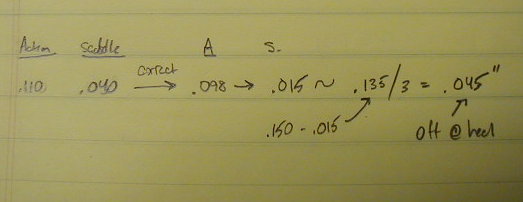 |
Here's an example of some neck calculations. The
action is .110" low E and the saddle is .060" tall. To get an
action of .093", I would have to drop the action .017". That
equals .034" at the saddle. I round up to .035" and subtract that
from the existing height of .060". That leaves me with a saddle of
.025" tall. I would like this saddle to be .150", so the
difference is .125". I need to raise the saddle .125". It's
a 3:1 ratio from the saddle to the heel, thus .125/3 = .042". I
need to remove approximately .042" from the heel. The other way I
do this.. the more accurate way... is to go ahead and a saddle of the
desired height in place, leave the guitar strung up for a few days,
measure the action, and calculate from there. |
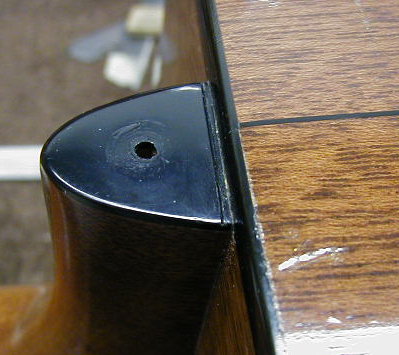 |
With that determined, I get .040" of feeler gauges and
a razor knife and mark the heel. This will give me a mark to sand
to once I'm re-fitting the neck. This is an accurate measurement,
taken with the neck under tension. Lately, I've been putting a
.150" tall saddle in the guitar and measuring with that in place because
I've found that some guitars belly up a little more with the taller
saddle and my measurements have been just a little off. It also
simplifies my calculations because I just figure out how much the action
needs to change and skip the "saddle correction" step- the correct
saddle is already in place. No real
big deal either way because the actual check comes later, in the neck jig.
These calculations just give me a pretty close estimate of how much
needs to come off.
|
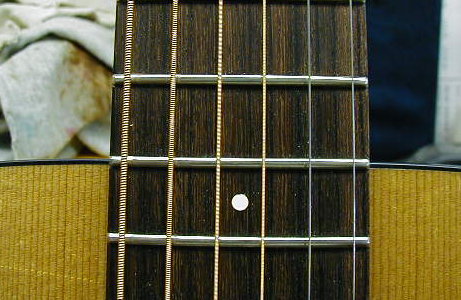 |
The last thing I want to check is the side alignment of
the E's. It's very common to find a guitar with the low E way
close to the edge of the fingerboard and the high E farther away.
I prefer to balance them out. This guitar is pretty close,
although in the picture, the high E is a little farther in. |
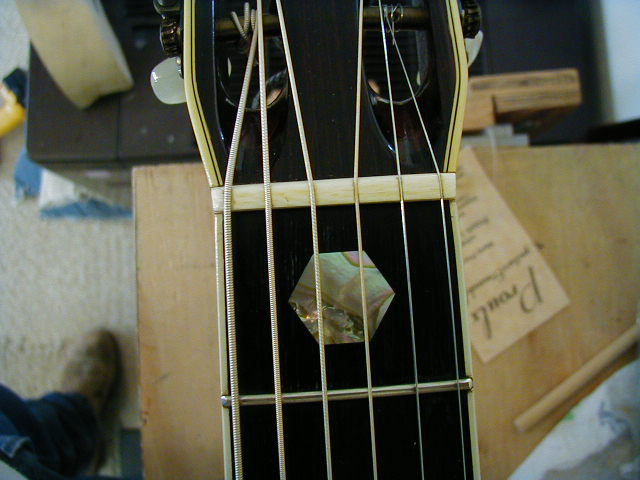 |
Here we can clearly see that the nut spacing is off,
with the low E being closer to the edge. Nut spacing will affect
the 12th fret spacing. I need to be aware of, and correct, these
things before I get the neck off. On this guitar, I'll make a new
nut before I proceed with the neck removal. |
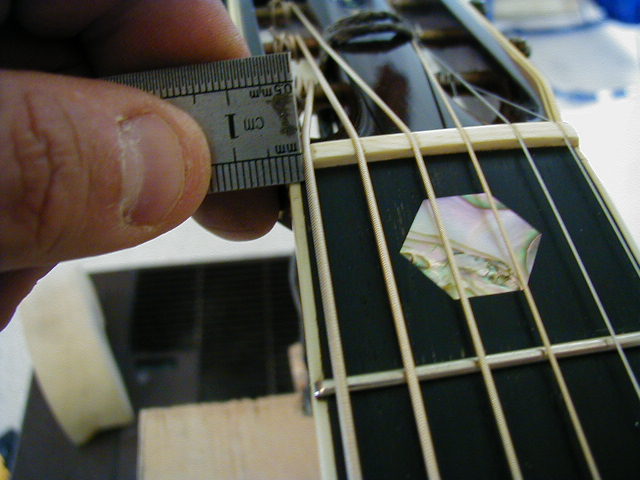 |
If you squint again and look really close, you'll see
that the low E on this nut is just shy of 3 mm from the edge. |
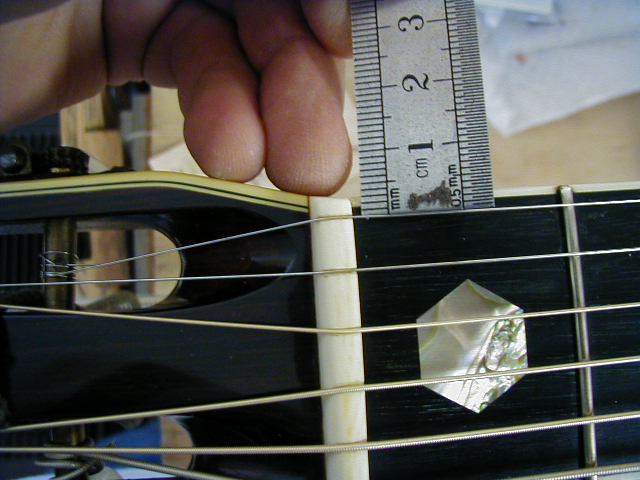 |
Over on the treble side, it's right at 3 mm. This
small difference will transmit down the fingerboard to the 12th fret.
So, before I worry about having the 12th fret even, I need to be sure
that the E's are balanced at the nut. |